MN7408 Research Methods Assignment Sample
Module code and Title: MN7408 Research Methods Assignment Sample
Exercise 1: Research Question
1.1. Research questions
The research question for this study will be.
- What is the role of supply chain management in a business?
- How does the supply chain help enhance international business outcomes?
- What are the challenges of Supply chain management in business growth?
- How to improve the supply chain management for the business?
1.2 Central research problem
The central research problem for this study could be stated that due to the inappropriate deployment of technological and human resources in place, the business outcome was reduced drastically.
Choice of a problem for study
Deployment of the appropriate employees and the relevant technology reduces the scope of the business. A business is an entity which requires regular upgradation for aligning its objectives with the requirements of the modern world. Technologies, such as big data, IoT, machine learning and the internet of things, needed to be incorporated with the supply chain management for better business outcomes. These technologies are modern and suitable to deal with modern requirements such as modification of commodities and methods of their delivery. The deployment of effective human resources such as hard workers in manufacturing and smart workers in the marketing and the selling department of the commodities will be evaluated. This will ensure the desired outcome of the business which is the key aim of the study which will be investigated.
Suitability of problem for the study
Masters level research requires out-of-box thinking which compels the evaluators to think differently. The modern requirement, in this regard, is the key theme based on which other elements such as human resources and technological introduction in the supply chain management will be adopted for investigation. This thing makes the study appropriate for future investigation and also aligns with the requirement to be considered a master-level study. Different existing studies will be evaluated in this regard. This required an exorbitant strive for investigation of various studies on supply chain management. It is cumbersome and requires a high level of dedication. The role of analytical thinking is pertinent for these requirements. Therefore, an experienced mind is essential for the same. Other than that, master-level research also requires providing a way forward which only comes through incessant analysis of the findings and the relevant study. This study will be focusing majorly on the facts based on which, way forwards could be provided to the targeted entities. Here, the business entities, employees, government and future researchers will be the targeted entities to convey the message of this study.
Academic issues related to the research questions
Research questions of this study could confront the issue of resource availability for secondary study. Business organisations do not ever expose their business management, especially the management of supply chain management. Therefore, a combination of secondary along with the primary study will be adopted in this study for better and more reliable results which could be effective for addressing the research questions. The role of responses of the sample entities for this will be considered pertinent. This will be able to make this study authentic for future researchers in this field for adopting the findings and relevance in their study.
Exercise 2: Thinking Ahead
2.1 Time plan
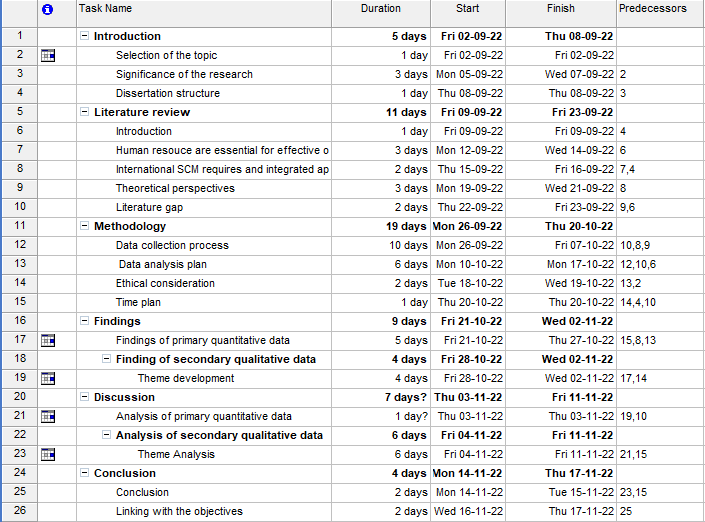
 Figure 1: Time plan (Source: self-developed)
Figure 1: Time plan (Source: self-developed)
The dissertation will take approximately 50 days starting from September 2022. This dissertation will include the elements such as a chapter introducing the dissertation, reviews of different literature, analysis and applicability of methodologies, findings of the data, analysis of the data and finally ending up with the conclusion. Completion of the introduction chapter will require 5 days. This chapter will include the elements such as selection of the topic, scope and significance of the study, the background of the research, rationale of the study and finally and depiction of the dissertation structure. The chapter of the literature review requires 11 days for accomplishment. In these chapter elements such as the role of human resources and technologies and what their roles are in improving and managing the supply chain of the business will be evaluated. The theoretical and conceptual framework will be in this chapter along with the literature gaps in the concerned field. This will be followed by the chapter on methodology. This chapter will take approximately 19 days. As the selection and application of the methodology are crucial for any study, this will require more time. Here, the data collection process, analysis plan, philosophy, approach, and design will be evaluated. Ethical considerations will be in this chapter for academic discipline.
In the findings chapter, both the primary quantitative data and secondary qualitative data will be collected. Here different findings will be indicted which will take near about 9 days. The chapter of discussion will take 7 days for discussion of themes in secondary qualitative data and quantitative data using SPSS or other applications such as MS Excel or STATA for quantitative analysis. This chapter will be followed by the conclusion chapter which will take more than 4 days. In this chapter, a general conclusion, linking with the objectives, recommendations based on the findings and the indication for future use of the study will be discussed.
2.2 Critical Path Analysis
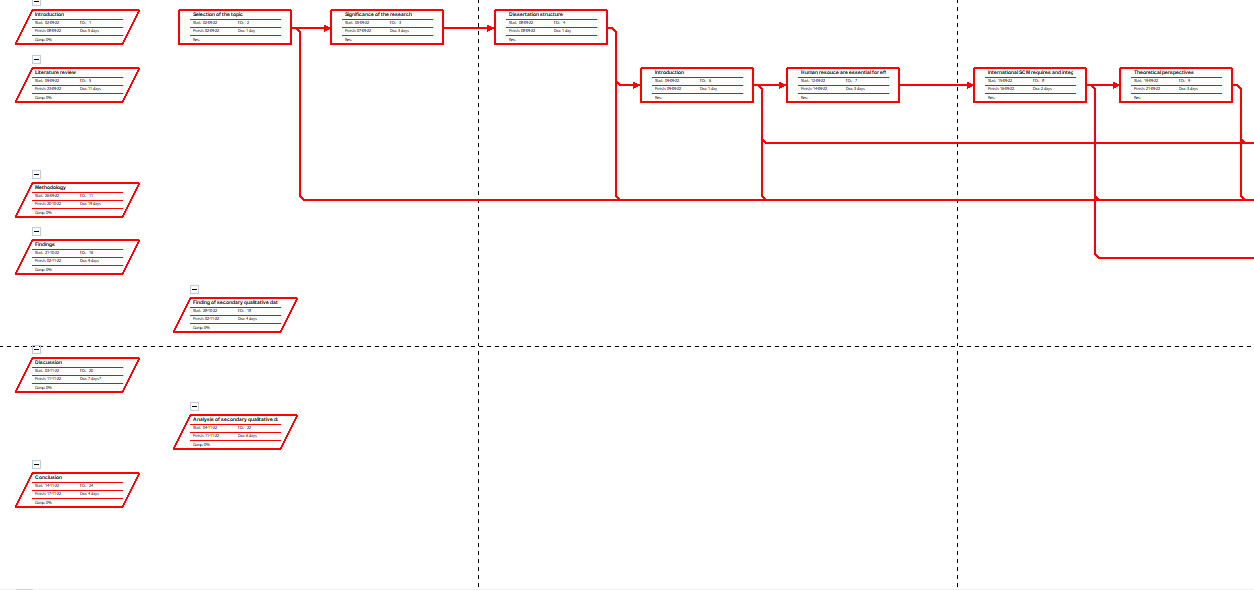
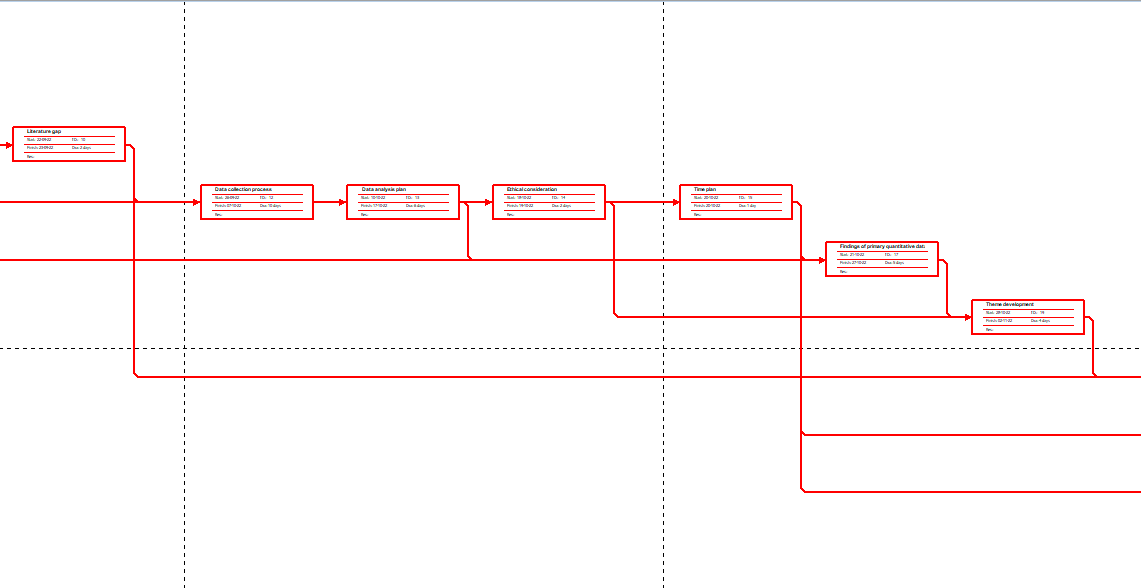
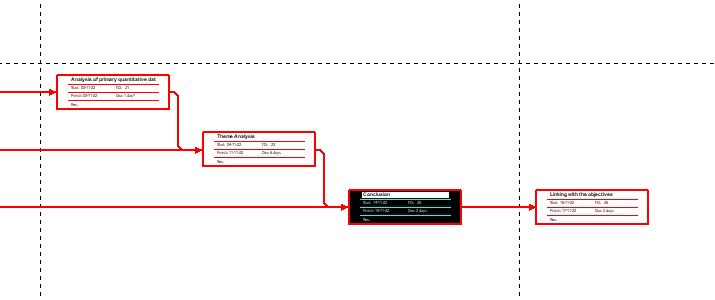 Figure 2: Hardest path using critical path analysis (Source: Self-developed)
Figure 2: Hardest path using critical path analysis (Source: Self-developed)
Critical path analysis indicates that the most difficult area in this study would be the data collection process which could be done after the findings of the literature gaps, findings of the international implication of SCM and the theoretical perspective of the study. Therefore, the selection of the time for data collection is difficult to decide. Other than that, complexity also arises in selecting the area of the study such as time plan, ethical consideration and data collection process. These three are crucial and complementary to each other. Therefore complexities in selection will be confronted.
Exercise 3: Literature review
3.1 Three relevant articles for the study
Article 1: “Blockchain for Supply Chain Traceability: Business Requirements and Critical Success Factors”
According to the study conducted by Hastig and Sodhi in 2020, blockchain could be utilised for delving more into operation management. This study has depicted that the supply chain could have an effective implication for the practical application of blockchain in supply chain management. In order to achieve this, critical factors needed to the identified and reliable supportive technologies needed to be deployed. Here the ethical elements in the production have been evaluated for a specific implementation of blockchain in supply chain management. These technologies have been evaluated for application in the Cobalt mining and pharmaceuticals industry. The methodology for this study was secondary qualitative using the existing study and articles of practitioners and scholars. Traceability is pertinent for finding the weaker elements in the supply chain which could be possible using Blockchain in the required location of the business such as the supply chain of the company. It has been deployed effectively in cobalt mining to detect and eradicate forced child labour in the same. According to the study, critical success factors of the business are the capabilities of the firm, collaboration, maturity of the technologies and their applications, the existing practice of supply chain management and leadership along with the traceability efforts of the firm.
Article 2: “The emerging big data analytics and IoT in supply chain management: a systematic review”
As per Aryal et al. (2018), the evaluation and implementation of disruptive technologies such as IoT and Big data technology have been changed based on the requirements of the modern world. This study aimed at evaluating the methods in which supply chain management and other related and relevant fields have been operating for business growth. According to the study, the application and implementation of these technologies are different in managing the different and disruptive changes which are an essential part of the business. Four-step systematic reviews have been adopted for the study, this includes a collection of existing studies, category selection, descriptive analysis and evaluation of material. The latent semantic method of analysis has also been adopted for the evaluation of the last study. In order to achieve this, relevant challenges in the supply chain and the trend in the literature have been adopted using Leximancer. In order to maintain the originality of the study, the authors investigated important trends in disruptive technologies research over the years. This study has found that the use of IoT in the supply chain has increased since 2015. It has also been found that the main focus of using big data in businesses is customer services and support, maintaining a supply chain network along with the maintenance of the system and performance of the finances. The application of IoT has been moved from general supply chain management to supply chain design, performances and modelling.
Article 3: “The impact of information technology and communication systems on the agility of supply chain management systems”
This study was conducted by Dehgani and Navimipour in 2019 for evaluating the role of Information technology on supply chain management and its agility in terms of market competition, innovation in products, product lifestyles and proliferation of products. Primary sample surveys of 120 workers of Golosal have been conducted in this study for collecting data by applying questionnaires. Likert scales have been adopted for the study for performing the measurement. Equation modelling techniques have also been adopted in this study for the reliability and validity of results. This study has found that IT has a relatively positive implication for maintaining agility in the supply chain management of the company. It has also been found that human resources and their skills also affect the agility of the supply chain or SCM. The originality of this study is that it allows for a complete framework for evaluating the impact of IT on the Agility of SCM.
3.2 10 Additional articles
| Sl.no | Title | Author and year |
| 1 | “Understanding the value of big data in supply chain management and its business processes: Towards a conceptual framework” | Brinch, M., 2018 |
| 2 | “Effects of green supply chain management practices on sustainability performance. Journal of Manufacturing Technology Management” | Cankaya, S.Y. and Sezen, B., 2018 |
| 3 | “Pandemics and supply chain management research: toward a theoretical toolbox” | Craighead, C.W., Ketchen Jr, D.J. and Darby, J.L., 2020 |
| 4 | “IoT in supply chain management: Opportunities and challenges for businesses in early industry 4.0 context” | de Vass, T., Shee, H. and Miah, S.J., 2021 |
| 5 | “Back in business: Operations research in support of big data analytics for operations and supply chain management” | Hazen, B.T., Skipper, J.B., Boone, C.A. and Hill, R.R., 2018 |
| 6 | “Sustainable supply chain management in small and medium enterprises” | Kot, S., 2018. |
| 7 | “Is blockchain a silver bullet for supply chain management? Technical challenges and research opportunities” | Kumar, A., Liu, R. and Shan, Z., 2020 |
| 8 | “Sustainable supply chain management: A review of literature and implications for future research” | Panigrahi, S.S., Bahinipati, B. and Jain, V., 2018 |
| 9 | “The evolution of resilience in supply chain management: a retrospective on ensuring supply chain resilience” | Pettit, T.J., Croxton, K.L. and Fiksel, J., 2019 |
| 10 | “Supply chain management and business sustainability synergy: A theoretical and integrated perspective” | Rezaee, Z., 2018 |
Exercise 4: Research Methods
4.1 Advantages and disadvantages of questionnaires
Questionnaires have been used for both quantitative and qualitative studies. The role of questionnaires is pertinent for guiding the whole study in a specific direction. The advantage and disadvantages of questionnaires have been described below.
The advantages of the questionnaires are multifaceted. It helps understand the targeted responders, is cost-effective for conducting the study, is specific to the audience of the target and ability to provide fast results. Other than that, it is scalable and helpful for market research. It also allows for smart analysis of the data. As this is both open-ended and closed-ended based on the data source, researchers get the necessary flexibility for extracting required information from the responders. It possesses a uniform format which is effective for scaling the data and representation of the same for desired results.
Disadvantages of questionnaires are the risk of incorrect feed basics from the responders, inability to fetch information for sensitive issues for study and ignorance of study. The most critical aspect of questionnaires is the ignorance of responders to any question which could be a crucial question for the whole study. Other than that, negligence of the emotions of the responders could possess disastrous implications for the researcher. A most critical challenge in the questionnaires is the different interpretations of the questions by the responders. This could result in inappropriate research findings and evaluation.
4.2 Advantages and disadvantages of interviews
The interview is used for primary qualitative study. It includes open-ended questions which allow the researchers to fetch out-of-context responses which could effectively validate the study. Like a questionnaire, the interview also possesses certain advantages and disadvantages which have been described below;
The advantage of the interview is that it provides the necessary flexibility for the responders to reply. This ensures effective information for the study. It is feasible for fetching data from individuals who cannot read or write. It helps the researchers to judge the non-verbal behaviour or body language of the responders. It provides flexibility to the interview to conduct the interviews in a place selected by him or her. Lastly, it allows the interviewer to control the order of the que4stion based on the situation.
The disadvantages of the interviews are that it is costly and time-consuming. Elements of subjectivity could reduce the reliability of the result. It provides less anonymity which hesitated many interviewees.
4.3 Advantages and disadvantages of using secondary data.
Secondary data are those which have been extracted from the existing studies. Different advantages and disadvantages of the secondary data have been discussed below;
The advantages of secondary data are its availability. Secondary data is largely available on the internet from which targeted academic investigation could be conducted. It is also cost-effective to conduct the study as the extraction of data requires less cost and lower time. Other than that, the researcher could also analyse the approach of the study for further investigation.
The disadvantage of the secondary data is the inaccuracy of the data gathered from the interviewees or the sample survey. Data from secondary studies could also be inaccurate due its the reliability level. Data could also be outdated and may not be appropriate for the study. Other than that, the issue of compatibility could also be a matter of concern. Here, the requirement of the study and the data available could be different which could vitiate the whole study and its result.
Exercise 5: Research Approach
Three types of research are adopted for the study; those are deductive approach, inductive approach and abductive approach. In this study, deductive research approaches will be adopted for the study. It is oriented to develop hypotheses which have been based on the existing studies and theories. This will be followed by the design strategy of the study to evaluate the hypothesis. Deductive indicates reasoning from the particular toward the general (Tu, 2018). The deductive approach was adopted for testing the variables of the earlier study and their linkages which is true in a particular situation for evaluating a more general situation. The supply chain management and its evaluation have been expected to be evaluated appropriately in this study for generalisation. Research questions on the role of SCM on business development will be tested both for the particular company and will also be evaluated in terms of international scenarios to make the theories of SCM more generalised. This way, deductive conclusions could be drawn based on the existing premises of the study and its propositions.
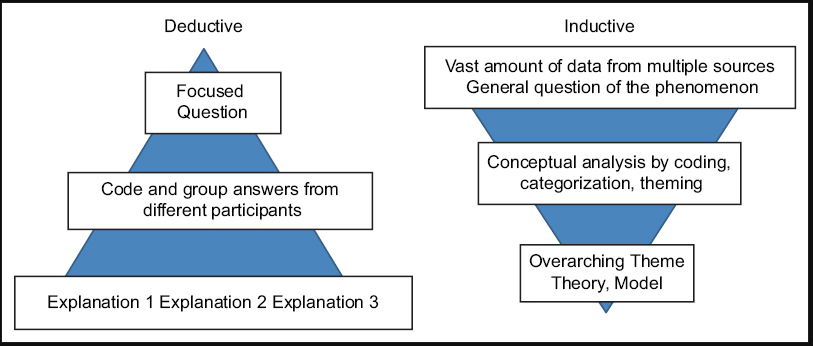 Figure 3: Comparison of deductive and Inductive research approaches (Source: Ijcne.org, 2022)
Figure 3: Comparison of deductive and Inductive research approaches (Source: Ijcne.org, 2022)
Other research approaches such as inductive and the Abductive will not be effective for the qualitative and quantitative study simultaneously. The inductive approach will not be adopted due to its proposition of proposing theories at the end of the study after thorough observation of the facts and data. According to Ustun and Tracey (2020), this study is targeted to evaluate the supply chain and the implication of human resources and technologies on the same. As this study is aimed at comparing the existing study on SCM and the data collected from the primary survey, an inductive approach might not work the same. Albeit, the inductive approach does not disagree with the theories while constructing research questions, it is inappropriate for this study due to its non-effective aspects in the comparison result and generalisation.
The Abductive approach is utilised for reducing weakness incorporated with both the deductive and inductive approaches (Costa et al 2020). It can be adopted to some extent at a later stage but initially, it will not be required for the study. This approach is used for clarity of the terms of the adopted theory and observation and also how the same will be adopted. The Abductive approach is almost similar to the deductive and inductive approaches but differs in terms of logical inference and construction of theories respectively. It starts with the fact and puzzles uncodified in the research process which has been analysed and explained with the help of the abductive approach. This puzzle and facts emerged when the researchers confronted any empirical situations which required a range of existing theories and study\eis for understanding the same and analysing thereafter. These way researchers find the best explanatory alternatives for the study to explain the facts and puzzle (Costa et al 2020). As an example when a survey will be conducted, researchers might confront the challenges of team spirit which could not be evaluated in terms of SCM theories only. Researchers needed to adopt the help of other studies on human resources and leadership. Therefore, a deductive approach would be effective for the study to address the research questions and if any anomalies occurred during the study, the help of the abduction approach could also be adopted.
Exercise 6: Samples of the study
6.1 Primary/empirical quantitative study
This study will adopt a primary quantitative data collection for analysis using a sample survey of 100 individuals directly or indirectly associated with the supply chain management of the business. This number is appropriate for delving more into the issue of supply chain management as the responders will form the same sector. This sample size will include all genders, designations and working age groups. Both regional and international participants associated with the Supply chain management, and IT will be surveyed for a better understanding and generalisation of the study for evaluating theories of SCM. This might include managers, workers, agents and suppliers to the business organisations. The size of the sample would be enduring for analysing the results of the study. The choice of participants is appropriate as the reflection from the side of responders associated with the SCM will be crucial for analysis (Murphy Odo. 2021). Their experiences in the managing SCM of their respective company would enlighten the study with practical implications (Demena et al. 2021). The role of data collection and order of questionnaires is crucial for reliable results. This study will adopt three methods for conducting surveys using Google form for international participants, confrontation with the local participants and survey through the mail.
6.2 Secondary qualitative study
The secondary qualitative study will adopt the finding of an existing study in the field. This includes the 50 studies among which 40 have been excluded using PRISMA methods. It has been depicted below;
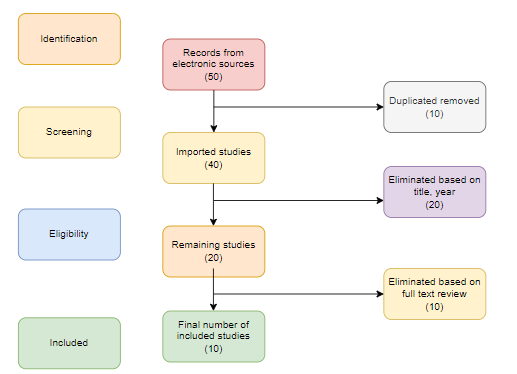 Figure 4: PRISMA Analysis (Source: Self-developed)
Figure 4: PRISMA Analysis (Source: Self-developed)
In the above figure, 10 existing studies on SCM will be evaluated. This structure and reduction have been based on certain parameters such as screening and eligibility (Browne et al. 2020). Other than that, different articles will also be evaluated in this study for comprehending the issues in a more effective way for desired results. This study will adopt different articles, including above mentioned 10 existing studies, books and research papers. These choices are appropriate in the sense that it ensures accurate data after the PRISMA analysis. As per Tseng et al. (2020), the reliability of secondary data is low but to make the study all-encompassing, different sources are needed to be adopted such as qualitative and quantitative data. Therefore, the reliability of the study would be effective for understanding the role of technology and human resources in improving the effectiveness of the SCM for business firms.
Reference
Aryal, A., Liao, Y., Nattuthurai, P. and Li, B., 2018. The emerging big data analytics and IoT in supply chain management: a systematic review. Supply Chain Management: An International Journal. https://doi.org/10.1108/SCM-03-2018-0149
Browne, S., Barron, C., Staines, A. and Sweeney, M.R., 2020. ‘We know what we should eat but we don’t…’: a qualitative study in Irish secondary schools. Health Promotion International, 35(5), pp.984-993. https://doi.org/10.1093/heapro/daz087
Costa, E., Soares, A.L. and de Sousa, J.P., 2020. Industrial business associations improving the internationalisation of SMEs with digital platforms: A design science research approach. International Journal of Information Management, 53, p.102070. https://doi.org/10.1016/j.ijinfomgt.2020.102070
Dehgani, R. and Navimipour, N.J., 2019. The impact of information technology and communication systems on the agility of supply chain management systems. Kybernetes. https://doi.org/10.1108/K-10-2018-0532
Demena, B.A., Reta, A.S., Jativa, G.B., Kimararungu, P.B. and van Bergeijk, P.A., 2021. Publication bias of economic sanctions research: a meta-analysis of the impact of trade linkage, duration and prior relations on sanctions success. In Research Handbook on Economic Sanctions (pp. 125-150). Edward Elgar Publishing. https://doi.org/10.4337/9781839102721.00012
Hastig, G.M. and Sodhi, M.S., 2020. Blockchain for supply chain traceability: Business requirements and critical success factors. Production and Operations Management, 29(4), pp.935-954. Available at: https://openaccess.city.ac.uk/id/eprint/23275/1/ Accessed on 19/8/2022
Ijcne.org, 2022. Data analysis in qualitative research. Available at: https://www.ijcne.org/article.asp?issn%3D2230-7354;year%3D2019;volume%3D20;issue%3D1;spage%3D40;epage%3D45;aulast%3DRavindran Accessed on 19/8/2022
Murphy Odo, D., 2021. Examining the influence of English songs on English L2 lexical learning: a quantitative meta-analytic review. Language, Culture and Curriculum, pp.1-18. https://doi.org/10.1080/07908318.2021.2022684
Tseng, M.L., Chen, C.C., Wu, K.J. and Tan, R., 2020. Eco-efficient sustainable service supply chain management hierarchical model based on qualitative information and quantitative data. Management of Environmental Quality: An International Journal, 31(4), pp.961-984. https://doi.org/10.1108/MEQ-08-2019-0179
Tu, M., 2018. An exploratory study of Internet of Things (IoT) adoption intention in logistics and supply chain management: A mixed research approach. The International Journal of Logistics Management. https://doi.org/10.1108/IJLM-11-2016-0274
Ustun, A.B. and Tracey, M.W., 2020. An effective way of designing blended learning: A three phase design-based research approach. Education and Information Technologies, 25(3), pp.1529-1552. https://doi.org/10.1007/s10639-019-09999-9
Appendices
Appendix 1: Survey questions
Question 1: What is your age?
- Below 20
- 20-30
- 31-40
- 41-50
- 51-60
- 60 and above
Question 2: What is your Gender?
- Male
- Female
- Prefer not to say
Question 3: What is monthly income?
- Below 1000 Euros
- 1000-10000 Euros
- 10000-20000 Euros
- 20000 and above
Question 4: Supply chain management help enhance business growth?
- Agree
- Disagree
- Strongly agree
- Strongly disagree
- Don’t know
Question 5: Is effective SCM help reduce cost of business operations?
- Agree
- Disagree
- Strongly agree
- Strongly disagree
- Don’t know
Question 6: Do you think integration of world SCM is pertinent for integrated business development?
- Agree
- Disagree
- Strongly agree
- Strongly disagree
- Don’t know
Question 7: Is SCM helps enhanced international business outcome?
- Agree
- Disagree
- Strongly agree
- Strongly disagree
- Don’t know
Question 8: Is technological backwardness is primary hurdle for effective SCM setup?
- Agree
- Disagree
- Strongly agree
- Strongly disagree
- Don’t know
Question 9: Do you think Human resource and deployment of the same affects the SCM?
- Yes
- No
Question 10: Is it true that deployment of appropriate human resource in desired location of SCM help it improve?
- Agree
- Disagree
- Strongly agree
- Strongly disagree
- Don’t know
Question 11: Is Blockchain technology is effective for improving SCM?
- Yes
- No
Question 12: Is IT and it application in SCM reducing the cost of operations?
- Agree
- Disagree
- Strongly agree
- Strongly disagree
- Don’t know
Question 13: Do you agree that both technology and human resource are pertinent for improving SCM?
- Agree
- Disagree
- Strongly agree
- Strongly disagree
- Don’t know
Know more about UniqueSubmission’s other writing services:

